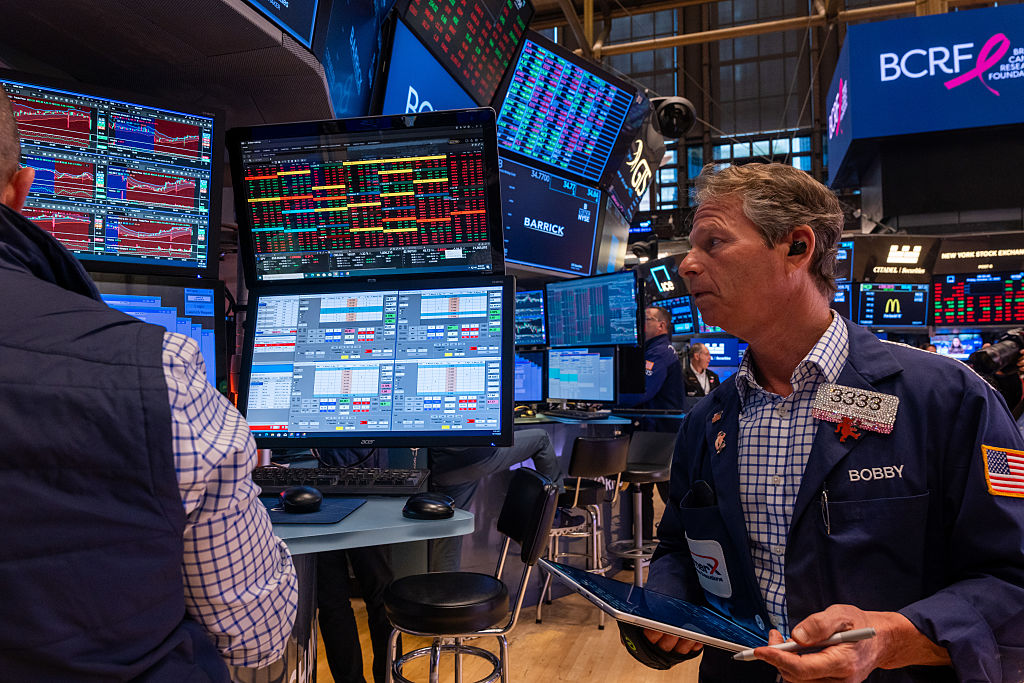James Halstead is a family firm going cheap but should you buy?
James Halstead will rebound from a weak patch, while tax changes would be a buying opportunity.
Good companies listed on Aim are typically expensive. This is because many shareholders own the shares to lower their inheritance tax (IHT) bill rather than to make a return and are less bothered by valuation. However, one of the most popular stocks in IHT portfolios now looks unusually cheap. James Halstead (Aim: JHD) has performed poorly over the last couple of years due to supply-chain disruptions.
Fifty years ago the company faced a similar challenge but went on to perform very well for the next five decades. Does today present a similar opportunity for patient investors, or do the rumoured changes to business property relief (BPR) on Aim-listed companies mean that this apparent cheapness is justified?
James Halstead is a multigenerational family business based in Manchester. It was founded in 1915 by James Halstead and is today run by Mark Halstead as executive chairman, the fourth generation of the family. Initially, the business was a textiles company creating rubberised waterproof fabrics used in rainwear – a particularly important industry in a city as notoriously wet as Manchester. Sometime in the 1930s, the sons of the founder began to pivot the business towards the nascent industry of polymer-based flooring. For a long time, the company also retained interests in waterproof clothing, owning Belstaff, the British producer of waxed jackets, from 1948 until it sold the brand in 2004.
MoneyWeek
Subscribe to MoneyWeek today and get your first six magazine issues absolutely FREE

Sign up to Money Morning
Don't miss the latest investment and personal finances news, market analysis, plus money-saving tips with our free twice-daily newsletter
Don't miss the latest investment and personal finances news, market analysis, plus money-saving tips with our free twice-daily newsletter
Halstead's fall from grace
The shares reached an all-time high in early 2022 at a price just over 300p. Since then, they have fallen to a level below 200p now, with a peak-to-trough performance of almost -50% at the worst point. Having operated well through the Covid pandemic, the company began experiencing problems as higher inflation and supply-chain difficulties took hold in 2022. These were caused in part by the Russian invasion of Ukraine, which was responsible for a spike in the oil price. These issues were exacerbated by difficulties receiving deliveries of raw materials and sending deliveries of completed products because of bottlenecks in global supply chains. At the same time, parts of the world that had been considered safe for shipping, such as the Suez Canal, became less so. This has two effects. It increases the distance (and hence time) to ship goods since the most direct route is not always available. Additionally, the cost per mile tends to be higher because the additional miles that the global freight fleet is forced to undergo have the effect of reducing global capacity for shipping cargo. The overall effect is that it is harder to ship since there is less availability and when shipping capacity is secured, it is done so at a higher price.
The Halstead history
James Halstead has a very long history of making money for investors. However, it has not been without its problems in its 109-year history. In the early 1970s, the company was overly indebted and vulnerable to nasty surprises. Then in October 1973, oil producers in the Middle East placed an embargo on exports to countries that had supported Israel during the Yom Kippur War, including the UK. This led to a spike in the oil price, a key component in the company’s cost base, potentially threatening its survival. Drastic measures had to be taken.
Geoffrey Halstead, the grandson of the founder, was installed as the chief executive in 1974 and set about putting the business on a firmer footing. The dividend was cut and the balance sheet was repaired to the point of always holding a large amount of cash. So today, far from being vulnerable to shocks, it is in a position to benefit when difficulties arise, since the company is at a relative advantage to weaker competitors. Since then, the dividend has been raised every year with next year marking the 50th consecutive rise. This puts James Halstead in an elite group of businesses globally that have managed a half-century of rising payouts.
Strong balance sheet, shrewd management team
Such was the scope of the turnaround enacted by Geoffrey Halstead, who passed away in August at the age of 94, that today the firm is arguably one of the least-risky businesses listed in the UK from a balance sheet perspective. It has consistently generated high levels of returns on capital. It rarely has any debt at all, and the net cash on the balance sheet is usually more than a year’s profits. It also has a management team that has proved to be shrewd, using its financial strength to make astute investments at times when its competitors are struggling. This final point is particularly important since the best investments are often made at the worst times. By maintaining such a strong balance sheet, James Halstead is better able to exploit these investment opportunities.
Geopolitical factors such as the oil shock and Covid have the potential to affect most businesses and James Halstead is not unique in going through a difficult patch. What is notable is that the share price is much weaker than it was, while the general stock market is in good health. It is probably true that James Halstead was more affected than some other businesses because of its sensitivity to oil and shipping. However, the extent of the decline in the share price would imply that the firm is in trouble. It is not.
The difficulties with input costs and shipping since 2022 certainly have echoes of the 1973-1974 oil crisis. However, precisely because James Halstead’s balance sheet was strengthened so much in the wake of that crisis, to protect from future shocks, it is in a completely different position today.
In a simple scenario where a balance sheet is merely adequate, a company can muddle through a period of difficulty. For James Halstead, the balance sheet is far stronger than needed and it is in a position to exploit opportunities that its competitors can’t. We have seen it do this before. Take the global financial crisis of 2008. During this time, when other businesses were going bankrupt, James Halstead was able to purchase additional warehouse space at incredibly attractive prices. “Buy when there’s blood in the streets, even if the blood is your own,” goes the old adage attributed to Nathan Mayer Rothschild. The truth of this attribution is debatable, but having the ability to follow the advice is surely not.
How tax helps – and hurts – Aim stocks
For a long time, James Halstead has traded at a high valuation, partly on account of its inclusion in inheritance tax (IHT) portfolios as a consequence of its Aim listing.
Aim was created to provide businesses with a less onerous route to capital markets. It did so by lowering the reporting requirements so that the annual cost of being a listed company was lowered. However, the attraction of Aim was further enhanced by allowing shareholders to claim business property relief (BPR) on inheritance. BPR exists to allow the descendants of business owners to pay considerably less IHT on business assets. BPR can be claimed on property, buildings, machinery and unlisted shares. It may seem confusing, but stocks listed on Aim are classified as unlisted for the purposes of inheritance tax. This means that any shareholders in many Aim-listed firms can benefit from BPR.
As a consequence of this arrangement, a sub-section of the investment management industry sprang up to help wealthy clients lower their IHT liability by investing in a portfolio of Aim-listed stocks. However, there are several conditions attached to these portfolios that exclude many businesses, which narrows down the sphere of potential investments considerably. The tax rules state that a qualifying stock must be a trading company that carries on the majority of its business in the UK. It must not be a business that primarily deals in securities, land or buildings, or earns most of its income from making or holding investments. Once bought, the stock must be held for a minimum of two years before they qualify.
From a practical perspective, for a wealth manager constructing an IHT portfolio for a client, the stocks will also need to be high-quality firms and relatively large and liquid by Aim standards. Once these criteria have been met, the collection of 609 Aim-listed stocks (as at time of writing) will be whittled down to less than 50. This means that certain firms, such as James Halstead, are very popular in these portfolios and in great demand. Consequently, the valuations at which they trade often reflect their scarcity and tax advantages, as well as their business prospects.
However, there is growing speculation that the special treatment given to Aim-listed firms regarding BPR could be removed. This has been a potential risk for a long time, but it may now be a more immediate one. The new government wants to increase the tax take and there are reports that chancellor Rachel Reeves is eyeing sweeping changes to IHT rules when she unveils her first Budget on 30 October. Outside of the Halstead family and the employees' trust, much of the shareholder base for James Halstead is made up of IHT portfolios. Should BPR be removed, these portfolios will start to sell. There wouldn’t necessarily be an exodus from the shares since there would probably be a grace period. But, as cheap as James Halstead may appear, selling pressure from IHT portfolios could force the shares even lower.
Still on track for long-term growth
If one were to ignore the question mark over BPR, the case to buy James Halstead seems straightforward. It is an excellent business that is strong, cheap and pays a generous dividend. Despite going through a difficult period, the firm has recently reported a year of profitable growth. Revenues were down just under 10%, but that was a function of the pass-through of lower input costs to customers. Volumes of product sold were higher. Pre-tax profits grew by almost 8%. Net profit was actually slightly down, but this was because of a slightly higher effective tax rate – something all businesses deal with in good times and bad. Furthermore, the always-conservative board said it was confident of a positive “out-turn” this year, which is code for continued volume and profit growth.
Further ahead, the board remains confident in the long-term strategy, which has served the business and shareholders well for close to 50 years. The reality is that the last couple of years have been somewhat difficult, but that needs to be put in context. Over the long term, James Halstead has managed modest, but unspectacular growth in profits on a consistent operating margin in the high-teens. In the last two years, margins have tended closer to mid-teens – ie, still very profitable – and growth has faltered slightly. Yet the decline in valuation is akin to a business that is going through a much worse period. At a current share price of around 190p, James Halstead is trading on 18 times forecast earnings – a much lower valuation than its average over most of the last 25 years. As a result of a fantastic dividend record, shareholders also earn more than a yield of 4.5% per year. For the patient investor willing to look through the potential for weakness due to any changes to BPR rules, the shares look like a good investment right now. For those more cautious, there is no harm in waiting until after the dust settles on the tax question.
This article was first published in MoneyWeek's magazine. Enjoy exclusive early access to news, opinion and analysis from our team of financial experts with a MoneyWeek subscription.
Get the latest financial news, insights and expert analysis from our award-winning MoneyWeek team, to help you understand what really matters when it comes to your finances.
Jamie is an analyst and former fund manager. He writes about companies for MoneyWeek and consults on investments to professional investors.
-
 Top 10 locations for buyers and renters revealed
Top 10 locations for buyers and renters revealedLondon is crowned as the most popular location for renters and buyers, despite rising costs. But where else are house hunters heading to?
-
 Making financial gifts to loved ones? Write it down or risk giving an IHT bill too
Making financial gifts to loved ones? Write it down or risk giving an IHT bill tooGiving gifts can be a way to pass on wealth and reduce the inheritance tax bill on your estate but do it wrong and you could leave family and friends more than they bargained for.
-
 Leading European companies offer long-term growth prospects
Leading European companies offer long-term growth prospectsOpinion Alexander Darwall, lead portfolio manager, European Opportunities Trust, picks three European companies where he'd put his money
-
 How to harness the power of dividends
How to harness the power of dividendsDividends went out of style in the pandemic. It’s great to see them back, says Rupert Hargreaves
-
 Why Trustpilot is a stock to watch for exposure to the e-commerce market
Why Trustpilot is a stock to watch for exposure to the e-commerce marketTrustpilot has built a defensible position in one of the most critical areas of the internet: the infrastructure of trust, says Jamie Ward
-
 Tetragon Financial: An exotic investment trust producing stellar returns
Tetragon Financial: An exotic investment trust producing stellar returnsTetragon Financial has performed very well, but it won't appeal to most investors – there are clear reasons for the huge discount, says Rupert Hargreaves
-
 How to capitalise on the pessimism around Britain's stock market
How to capitalise on the pessimism around Britain's stock marketOpinion There was little in the Budget to prop up Britain's stock market, but opportunities are hiding in plain sight. Investors should take advantage while they can
-
 London claims victory in the Brexit wars
London claims victory in the Brexit warsOpinion JPMorgan Chase's decision to build a new headquarters in London is a huge vote of confidence and a sign that the City will remain Europe's key financial hub
-
 Reinventing the high street – how to invest in the retailers driving the change
Reinventing the high street – how to invest in the retailers driving the changeThe high street brands that can make shopping and leisure an enjoyable experience will thrive, says Maryam Cockar
-
 Big Short investor Michael Burry closes hedge fund Scion Capital
Big Short investor Michael Burry closes hedge fund Scion CapitalProfile Michael Burry rightly bet against the US mortgage market before the 2008 crisis. Now he is worried about the AI boom